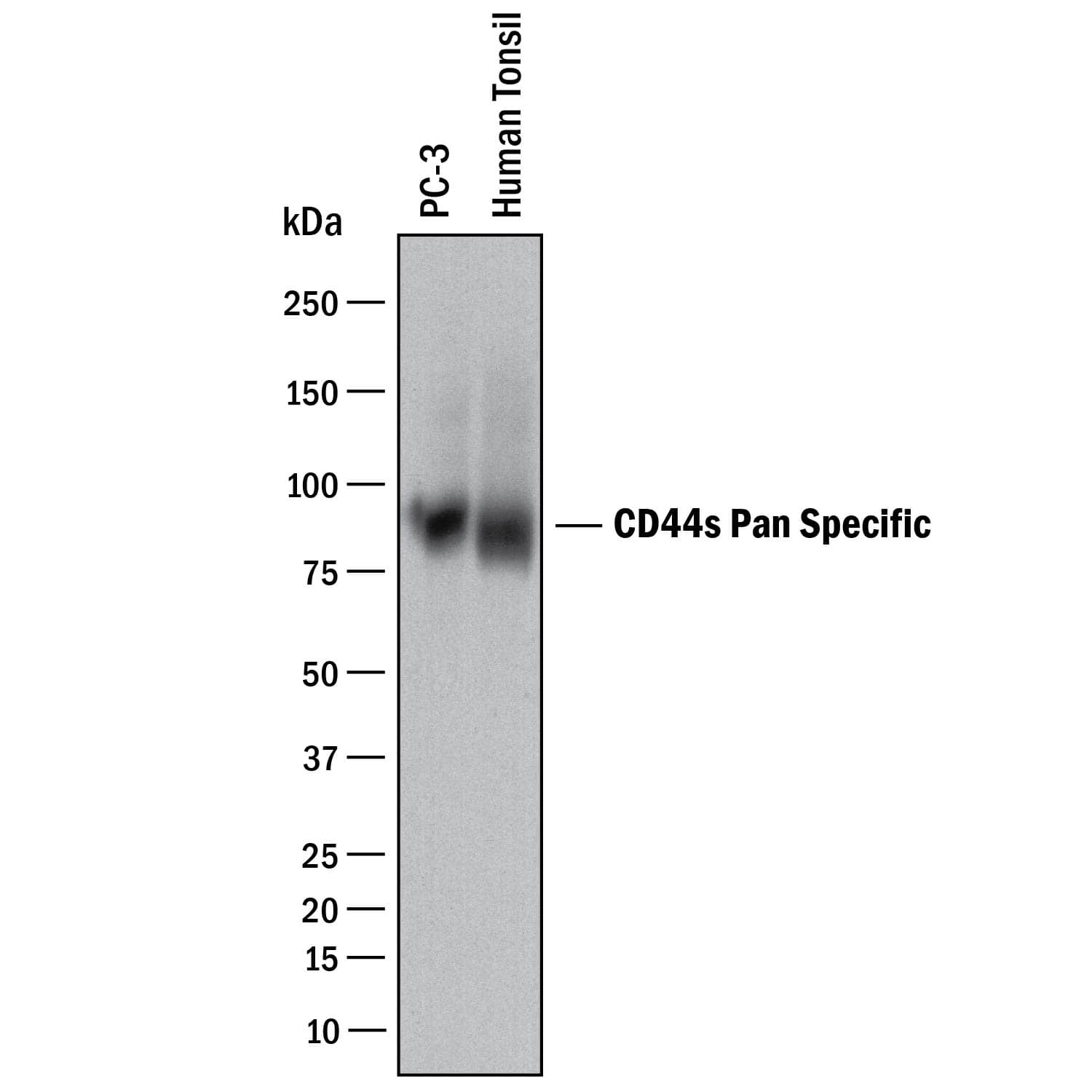Human CD44 Antibody Summary
Gln21-Thr222
Accession # P16070
Customers also Viewed
Applications
Please Note: Optimal dilutions should be determined by each laboratory for each application. General Protocols are available in the Technical Information section on our website.
Scientific Data
 View Larger
View Larger
Detection of CD44 in Human Colon. CD44 was detected in immersion fixed paraffin-embedded sections of Human Colon using Mouse Anti-Human CD44 Monoclonal Antibody (Catalog # MAB10146) at 5 µg/mL for 1 hour at room temperature followed by incubation with the Anti-Mouse IgG VisUCyte™ HRP Polymer Antibody (Catalog # VC001). Before incubation with the primary antibody, tissue was subjected to heat-induced epitope retrieval using VisUCyte Antigen Retrieval Reagent-Basic (Catalog # VCTS021). Tissue was stained using DAB (brown) and counterstained with hematoxylin (blue). Specific staining was localized to plasma membrane in glandular epithelial cells. View our protocol for IHC Staining with VisUCyte HRP Polymer Detection Reagents.
 View Larger
View Larger
Detection of CD44 in HT‑29 (Positive) & Jurkat (Negative). CD44 was detected in immersion fixed HT‑29 human colon adenocarcinoma cell line (Positive) & absent in Jurkat human acute T cell leukemia cell line (Negative) using Mouse Anti-Human CD44 Monoclonal Antibody (Catalog # MAB10146) at 8 µg/mL for 3 hours at room temperature. Cells were stained using the NorthernLights™ 557-conjugated Anti-Mouse IgG Secondary Antibody (red; Catalog # NL007) and counterstained with DAPI (blue). Specific staining was localized to cell membrane. View our protocol for Fluorescent ICC Staining of Cells on Coverslips.
Preparation and Storage
- 12 months from date of receipt, -20 to -70 °C as supplied.
- 1 month, 2 to 8 °C under sterile conditions after reconstitution.
- 6 months, -20 to -70 °C under sterile conditions after reconstitution.
Background: CD44
CD44 is a ubiquitously expressed protein that is the major receptor for hyaluronan and exerts control over cell growth and migration (1‑3). Human CD44 has a 20 amino acid (aa) signal sequence, an extracellular domain (ECD) with a 100 aa hyaluronan‑binding disulfide‑stabilized link region and a 325‑530 aa stem region, a 21 aa transmembrane domain, and a 72 aa cytoplasmic domain. CD44 transcripts undergo complex alternative splicing, and, within the stem, ten variably spliced exons (v1‑10 corresponding to exons 6‑15; although human CD44 lacks v1/exon 6) produce multiple protein isoforms (1‑4). The standard or hematopoietic form, CD44H, does not include the variable segments (1‑4). Cancer aggressiveness and T cell activation have been correlated with expression of specific isoforms (1, 4, 5). Human CD44v5 contains exon 10 and is associated with tumor progression and metastasis in many types of cancer including breast, colon, lung, renal, skin, and ovarian tumors (6, 12). With variable N‑ and O‑glycosylation and splicing within the stalk, CD44 can range from 80 to 200 kDa (1). Within the N‑terminal invariant portion of the ECD (aa 21‑222), human CD44 shares 76%, 76%, 86%, 83% and 79% identity with corresponding mouse, rat, equine, canine and bovine CD44, respectively. The many reported functions of CD44 fall within three categories (1). First, CD44 binds hyaluronan and other ligands within the extracellular matrix and can function as a "platform" for growth factors and metalloproteinases. Second, CD44 can function as a co‑receptor that modifies activity of receptors including MET and the ERBB family of tyrosine kinases. Third, the CD44 intracellular domain links the plasma membrane to the actin cytoskeleton via the ERM proteins, ezrin, radixin and moesin. CD44 can be synthesized in a soluble form (6) or may be cleaved at multiple sites by either membrane‑type matrix metalloproteinases, or ADAM proteases to produce soluble ectodomains (8, 9). The cellular portion may then undergo gamma secretase‑dependent intramembrane cleavage to form an A beta‑like transmembrane portion and a cytoplasmic signaling portion that affects gene expression (10, 11). These cleavage events are thought to promote metastasis by enhancing tumor cell motility and growth (1, 8). CD44v5 plays important role in cancer progression involving in cell migration and invasion and is considered a functional cancer biomarker (6, 12).
- Ponta, H. et al. (2003) Nat. Rev. Mol. Cell Biol. 4:33.
- Screaton, G.R. et al. (1992) Proc. Natl. Acad. Sci. USA 89:12160.
- Screaton, G.R. et al. (1993) J. Biol. Chem. 268:12235.
- Lynch, K.W. (2004) Nat. Rev. Immunol. 4:931.
- Todaro, M. et al. (2014) Cell stem cell 14:342
- Vizoso, F.J. et al. (2004) J. Cancer Res. Clin. Oncol. 130:679.
- Yu, Q. and B.P. Toole (1996) J. Biol. Chem. 271:20603.
- Nagano, O. and H. Saya (2004) Cancer Sci. 95:930.
- Nakamura, H. et al. (2004) Cancer Res. 64:876.
- Murakami, D. et al. (2003) Oncogene 22:1511.
- Lammich, S. et al. (2002) J. Biol. Chem. 277:44754.
- Fox, S.B. et al. (1994) Cancer Res. 54:4539.
Product Datasheets
FAQs
No product specific FAQs exist for this product, however you may
View all Antibody FAQsReviews for Human CD44 Antibody
There are currently no reviews for this product. Be the first to review Human CD44 Antibody and earn rewards!
Have you used Human CD44 Antibody?
Submit a review and receive an Amazon gift card.
$25/€18/£15/$25CAN/¥75 Yuan/¥2500 Yen for a review with an image
$10/€7/£6/$10 CAD/¥70 Yuan/¥1110 Yen for a review without an image
























